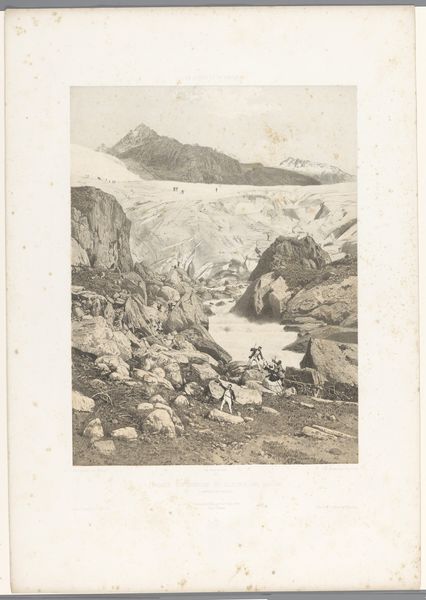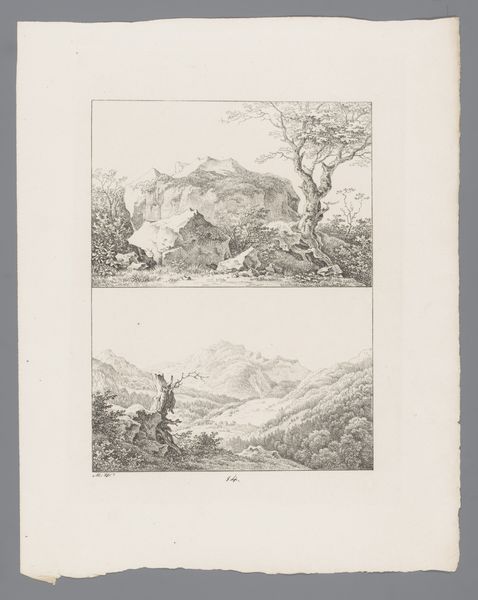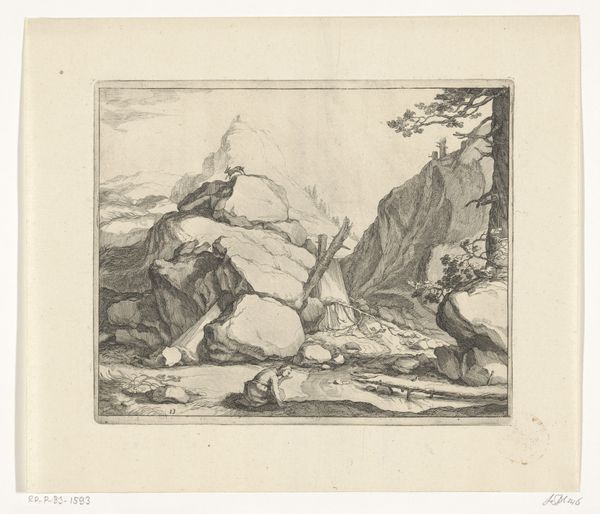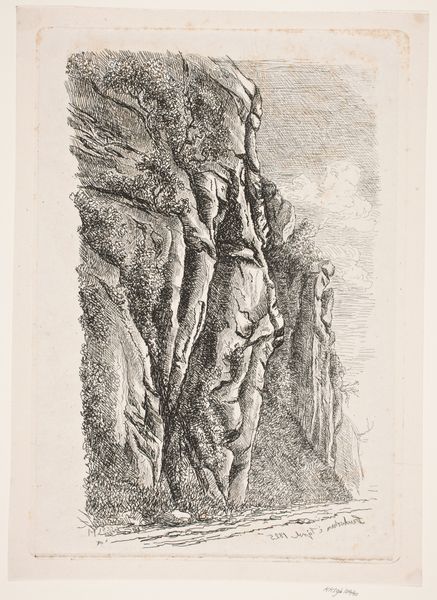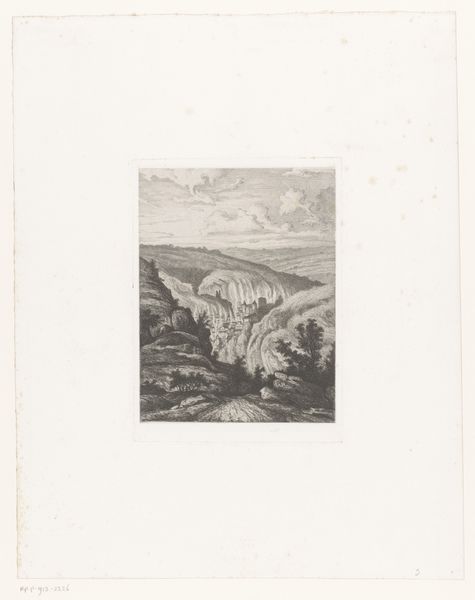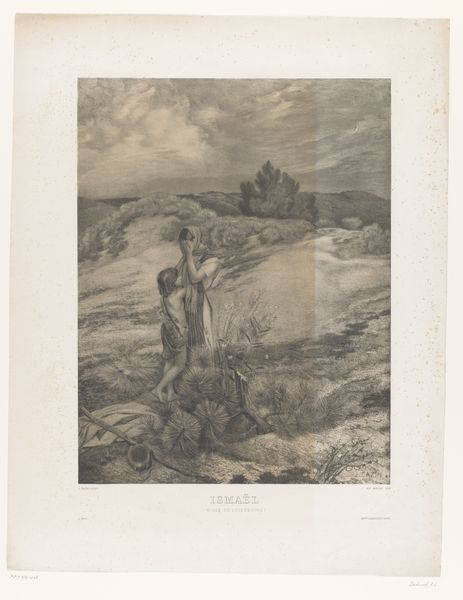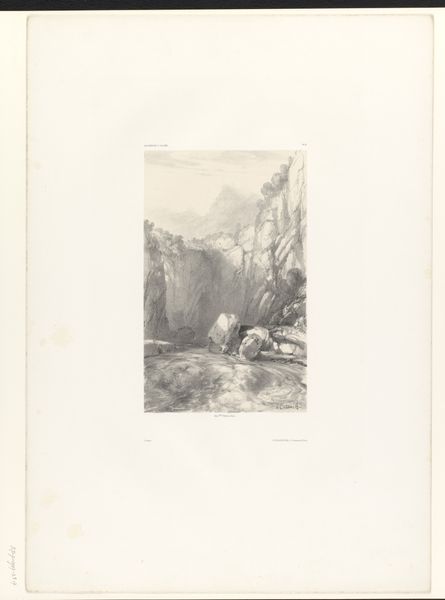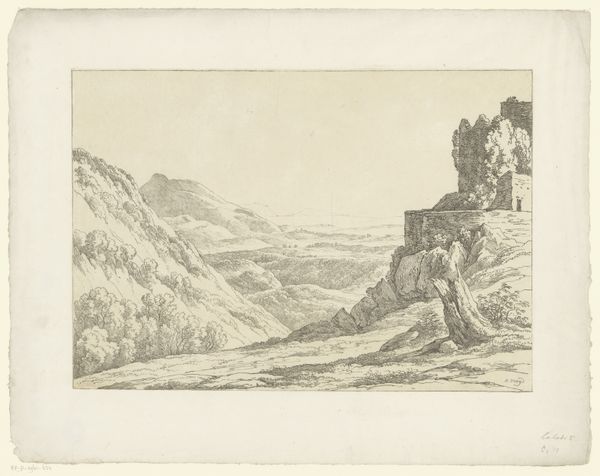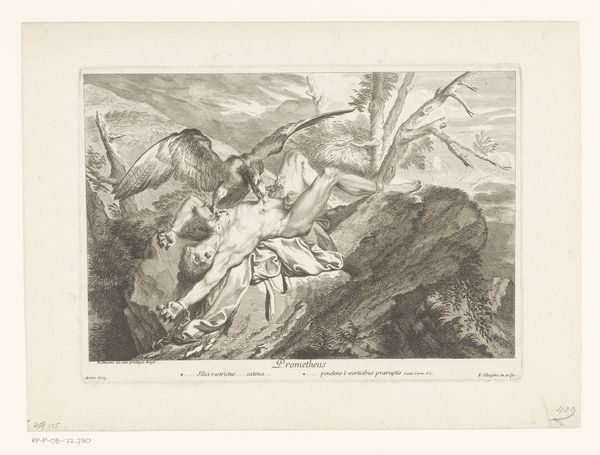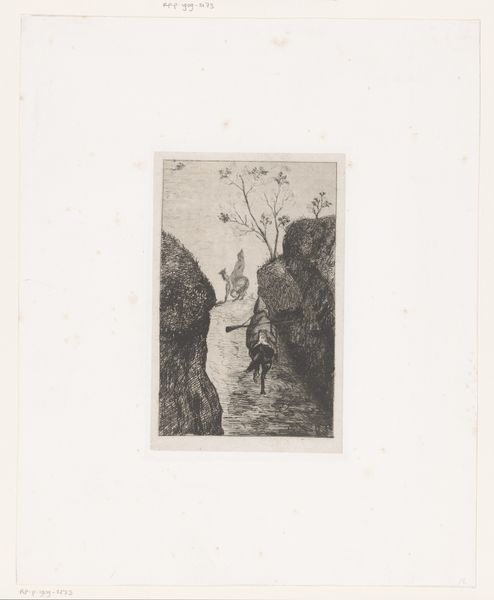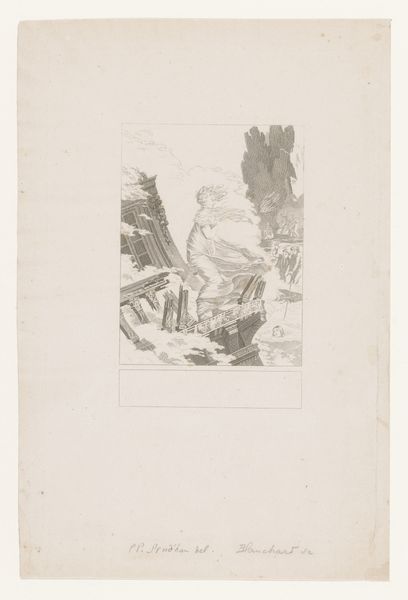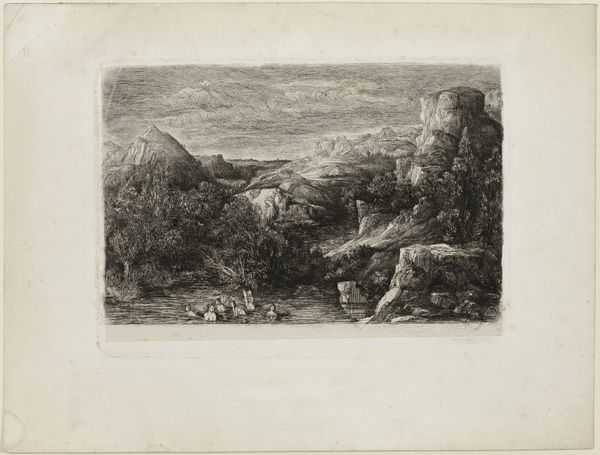
Dimensions: height 425 mm, width 295 mm
Copyright: Rijks Museum: Open Domain
Editor: This is Max Klinger's "Lawine," created in 1881 using etching, drawing, ink, graphite and paper. It's a strikingly stark image, isn't it? The harsh lines and monochrome palette really give a sense of desolation and danger, almost as if the landscape itself is collapsing. What's your interpretation of this piece? Curator: Looking at the means of production, the etched line itself is key. The layering and cross-hatching speak to a laborious, repetitive process. Consider the paper, its very texture adding to the gritty feel of the avalanche. It makes one think of the material circumstances surrounding the work. Was this print intended for mass consumption or a select few? Who would have owned such an image, and how might its context have affected its reception? Editor: That’s interesting. I was mostly focused on the scene itself. I didn't consider the social or economic implications of its production. How do you think the choice of printmaking as a medium plays into that? Curator: Printmaking inherently suggests reproducibility, a wider audience. This moves us away from the traditional idea of the singular, precious artwork accessible only to the elite. The work challenges these conventional artistic boundaries, becoming part of a visual culture tied to distribution and consumption. Was Klinger making a statement about art and labor, or was he simply exploiting the potential of the medium for wider circulation? Editor: So, even the choice of material can be seen as a social or political statement. It shifts my perspective to think about the context in which it was made, and for whom. Curator: Precisely. It urges us to move past the image itself, to the material reality that shaped its creation and reception. Editor: I’ll definitely keep an eye on those material aspects when analyzing artworks from now on. Thanks!
Comments
No comments
Be the first to comment and join the conversation on the ultimate creative platform.

